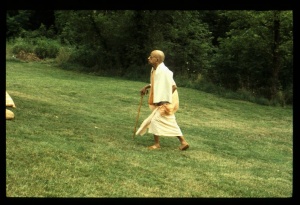CC Antya 20.147 (1975): Difference between revisions
(Vanibot #0027: CCMirror - Mirror CC's 1996 edition to form a basis for 1975) |
(Vanibot #0020: VersionCompareLinker - added a link to the Version Compare feature) |
||
| Line 2: | Line 2: | ||
<div style="float:left">'''[[Sri Caitanya-caritamrta (1975)|Śrī Caitanya-caritāmṛta (1975)]] - [[CC Antya (1975)|Antya-līlā]] - [[CC Antya 20 (1975)|Chapter 20: The Śikṣāṣṭaka Prayers]]'''</div> | <div style="float:left">'''[[Sri Caitanya-caritamrta (1975)|Śrī Caitanya-caritāmṛta (1975)]] - [[CC Antya (1975)|Antya-līlā]] - [[CC Antya 20 (1975)|Chapter 20: The Śikṣāṣṭaka Prayers]]'''</div> | ||
<div style="float:right">[[File:Go-previous.png|link=CC Antya 20.144-146 (1975)|Antya-līlā 20.144-146]] '''[[CC Antya 20.144-146 (1975)|Antya-līlā 20.144-146]] - [[CC Antya 20.148 (1975)|Antya-līlā 20.148]]''' [[File:Go-next.png|link=CC Antya 20.148 (1975)|Antya-līlā 20.148]]</div> | <div style="float:right">[[File:Go-previous.png|link=CC Antya 20.144-146 (1975)|Antya-līlā 20.144-146]] '''[[CC Antya 20.144-146 (1975)|Antya-līlā 20.144-146]] - [[CC Antya 20.148 (1975)|Antya-līlā 20.148]]''' [[File:Go-next.png|link=CC Antya 20.148 (1975)|Antya-līlā 20.148]]</div> | ||
{{CompareVersions|CC|Antya 20.147|CC 1975|CC 1996}} | |||
{{RandomImage}} | {{RandomImage}} | ||
==== TEXT 147 ==== | ==== TEXT 147 ==== | ||
<div class="verse"> | <div class="verse"> | ||
:sabāra caraṇa- | :sabāra caraṇa-kṛpā--'guru upādhyāyi' | ||
:mora | :mora vāṇī--śiṣyā, tāre bahuta nācāi | ||
</div> | </div> | ||
| Line 25: | Line 24: | ||
<div class="translation"> | <div class="translation"> | ||
The mercy of their lotus feet is my spiritual master, and my words are my disciples | The mercy of their lotus feet is my spiritual master, and my words are my disciples that I have made dance in various ways. | ||
</div> | </div> | ||
| Line 34: | Line 33: | ||
Upādhyāyī, or upādhyāya, refers to one who teaches when approached (upetya adhīyate asmāt). In the Manu-saṁhitā it is said: | Upādhyāyī, or upādhyāya, refers to one who teaches when approached (upetya adhīyate asmāt). In the Manu-saṁhitā it is said: | ||
:eka-deśaṁ tu vedasya vedāṅgāny api vā punaḥ | :eka-deśaṁ tu vedasya | ||
:yo | :vedāṅgāny api vā punaḥ | ||
:yo 'dhyāpayati vṛtty-artham | |||
:upādhyāyaḥ sa ucyate | |||
"One who teaches others a part of the Vedas or literatures supplementary to the Vedas may be called upādhyāya." Upādhyāya also refers to one who teaches art. | |||
</div> | </div> | ||
Latest revision as of 00:38, 27 January 2020

His Divine Grace
A.C. Bhaktivedanta Swami Prabhupada
A.C. Bhaktivedanta Swami Prabhupada
TEXT 147
- sabāra caraṇa-kṛpā--'guru upādhyāyi'
- mora vāṇī--śiṣyā, tāre bahuta nācāi
SYNONYMS
sabāra—of all of them; caraṇa-kṛpā—the mercy of the lotus feet; guru upādhyāyī—my teacher of Vedic instruction; mora vāṇī—my words; śiṣyā—the disciples; tāre—them; bahuta nācāi—I made dance in various ways.
TRANSLATION
The mercy of their lotus feet is my spiritual master, and my words are my disciples that I have made dance in various ways.
PURPORT
Upādhyāyī, or upādhyāya, refers to one who teaches when approached (upetya adhīyate asmāt). In the Manu-saṁhitā it is said:
- eka-deśaṁ tu vedasya
- vedāṅgāny api vā punaḥ
- yo 'dhyāpayati vṛtty-artham
- upādhyāyaḥ sa ucyate
"One who teaches others a part of the Vedas or literatures supplementary to the Vedas may be called upādhyāya." Upādhyāya also refers to one who teaches art.